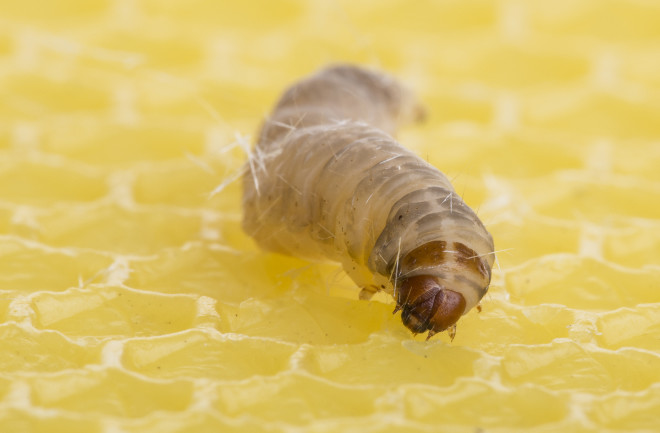Each year, humanity churns out some 300 million tons of plastic and ships it around the world before dropping it into landfills. And the problem doesn’t stop there. In the half-century since plastic exploded into our lives, tiny bits of it have spread through our oceans, our ecosystems and even our bodies. So far, humanity has struggled to get rid of it.
But there may be new hope for a solution. Scientists say they’ve found a caterpillar that loves to eat this non-biodegradable waste. The insects won’t save us from our plastic pollution, but figuring out how they digest the garbage could help offer up a solution.
“Nature is providing us with a great starting point to model how to effectively biodegrade plastic,” says biologist and study author Christophe LeMoine of Brandon University in Manitoba. “But we still have a few more puzzles to solve before using this technology, so it’s probably best to keep reducing plastic waste while this gets figured out.”
Reducing Plastic Waste
From Staten Island to Shanghai, the world is slowly waking up to the perils of plastic. Policymakers have started trying to reduce single-use plastics like grocery bags and straws. And they’ve had some success, too. Just last week, a statewide law went into effect in New York blocking businesses from even distributing plastic bags to customers. China recently said it would enact similar measures across all of its major cities by the end of the year. A few large corporations have even experimented with reusable containers for things like shampoo bottles and toothpaste tubes.
But at the same time, recycling in much of the world has come to a standstill. And even if humans could magically stop creating new plastics today, Earth would still be left with literal mountains of non-biodegradable waste.
Plastic-Munching Gut Microbes
One hint of hope has come from a group of organisms that scientists call plastivores. Like their name implies, these creatures will gladly eat some of the most common plastics. So far, researchers have discovered over 50 species of microorganisms, mostly bacteria and fungi, that can turn plastics into energy. And more recently, they’ve discovered several insect species that thrive on eating polyethylene, the primary plastic in single-use bags.
LeMoine and his Brandon University team focused on one of these insects: caterpillar larvae of the greater wax moth. The researchers were particularly interested in how this caterpillar, together with the microorganisms in its gut — its microbiome — could break down and metabolize plastic. That work included separating out the bacteria from the waxworms’ gut and growing it on its own in the lab. They found that one particular species of bacteria could indeed survive on nothing but plastic for a year.
But it wasn’t just a miracle bacteria behind the diet. Instead, the scientists discovered a “very close working relationship” between the caterpillar and its gut microbes. Both can consume plastic on their own. However, when the two work together, it rapidly accelerates the plastic biodegradation. What’s more, the researchers found that caterpillars that ate plastic actually had dramatically higher amounts of gut microbes.
Waxworms to the Rescue
These caterpillars aren’t some mutant evolved for the modern world, either. These so-called waxworms are actually bee pests that invade beehives and live off the honeycomb.
To a human, gobbling up delicious honeycomb may not sound the same as munching on a plastic bag; but for these waxworms, the two are nutritionally equivalent. The researchers say that the structure of honeycomb wax actually consists of very long chains of carbon and hydrogen, molecules called hydrocarbons. These hydrocarbon chains are the same things that make up the fossil fuel-derived plastics used so ubiquitously by humans.
“The waxworm and its gut bacteria must break down these long chains (in honeycomb),” LeMoine says. “And presumably, because plastics are similar in structure, they can also co-opt this machinery to use polyethylene plastics as a nutrient source.” In fact, some of their gut bacteria even seemed to do better eating plastic.
How much plastic can a group of very hungry caterpillars eat? According to the scientists, about 60 waxworms chewed through a matchbook-sized square of plastic bag in under a week. Clearly, the world would need a lot of caterpillars to solve its plastic problems.
But LeMoine says that’s not really the point. “Waxworms are not an immediate solution to plastic pollution,” he says.
However, if scientists can unravel what makes these caterpillars and their gut bacteria flourish, they might be able to design tools to wipe out plastic. “A better understanding of how this synergy works may guide future efforts to design the ‘perfect’ plastic biodegradation system,” he says.
That goal is still far from complete.

